This couple’s gourmet mushroom business is reinventing the fungi

A 2 billion year old organism is the hot new food trend, and a gourmet business opportunity.
Words: Nadene Hall
Who: Kimi Knott & Zane Oosthuizen
What: Good Vibes Fungi
Where: Hastings
Land: 1.8ha (4.5 acres)
Web: goodvibesfungi.com, @goodvibesfungi
When you walk into the workroom at Good Vibes Fungi, the first thing you do is turn on Donald Trump. The tangerine orange concrete mixer – Don to his friends – blends food-grade organic wood pellets, buckwheat hulls, rye grains, and water to create the substrate that Kimi Knott and Zane Oosthuizen use to grow a range of gourmet mushrooms.
“Some people love (the name), some people hate it,” says Zane. “But (Don) is bright orange and makes a lot of noise – we think it’s hilarious.” The couple grows shiitake on logs, and three types of oyster: the common phoenix (Pleurotus pulmonarius), the vibrant pink (Pleurotus djarmor), and the endemic velvet (Pleurotus parsonsiae).
“The pinks are a bit of a showstopper at the market,” says Zane. “People are amazed. They say, ‘it’s too beautiful to eat’, or, ‘is it edible?’ Even I find mushrooms very strange.”
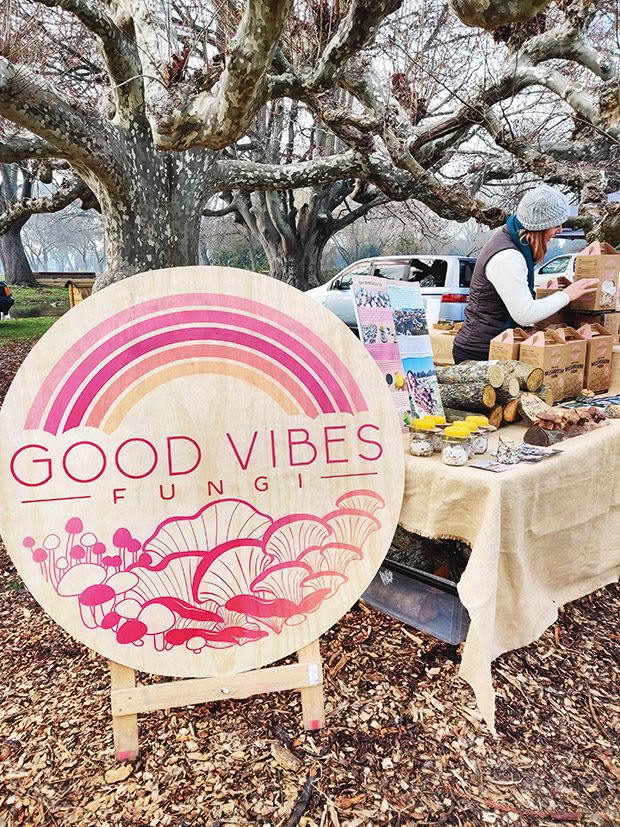
The couple used an online design service to create their logo, inspired by the pink oyster mushrooms which are the stars of their market stall.
The couple’s background is far from fungi. Kimi was fixing trains in Western Australia, and Zane (Zaney) was a roofer when they met. They spent time in Bali, then decided to help out Kimi’s parents by tidying up their Hastings block after a bad rental experience.
“We thought, let’s do six months on the land, reno it, and they can put it on the market. So we came back, and we fell in love with the Hawkes Bay, and we fell in love with the block.” Kimi’s original plan was to start a permaculture-based market garden but there were too many organic growers nearby, including one almost next door to them.
Another idea was a fungi farm, inspired by a talk from a mycologist. “I was part of a permaculture group, and one of the guest speakers was a mycologist. She just blew my mind – I couldn’t believe how amazing these things were. I started following people on Instagram and seeing all the pink mushrooms, the yellow ones, all these amazing mushrooms, and I was fascinated.
“So, it was like, let’s get into mushrooms! I love ideas and being inspired, but Zaney, he has the guts to just do it. He started building an incubation room, so we just went for it.” While Zane is handy with a hammer and construction, it’s quite a leap to build a complete mushroom growing farm.
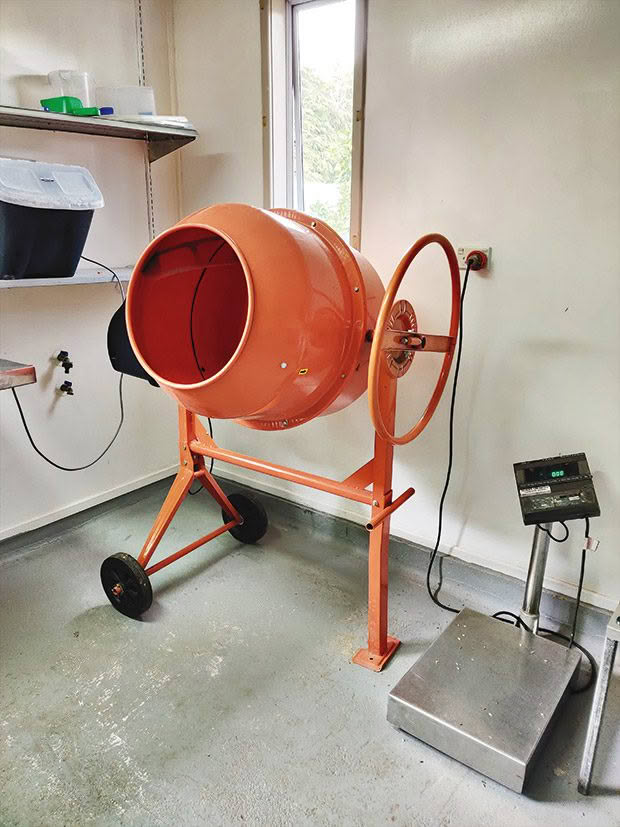
Donald Trump.
“Eighteen months ago, we had no idea about growing mushrooms,” says Zane. “We only ate them and took supplements. When we first started, we had the book by Paul Stamets, his mushroom cultivation guide, and within four days, I built the incubation room.”
The couple spent two months pulling down the old greenhouses on the block, salvaging a lot of the remains for their build. Zane re-used steel pipe, creating a rail system to hold the grow bags. They bought a second-hand shipping container and lined it with old polystyrene insulation panels lying unused in a warehouse.
Zane documented most of the construction of what he calls the ‘shroom boom room’ – go to the Good Vibes Fungi Instagram page and click on the saved story called ‘container fitout’. “You can see me going through it, saying, ‘ok I have an idea of how I want to build it.’ And then I build it and it doesn’t work, so I’m problem-solving as I go. I spent a lot of time looking at growing rooms on YouTube – a lot of them had machinery in the growing room, but I wanted to have everything external so we could maximise our growing space.”
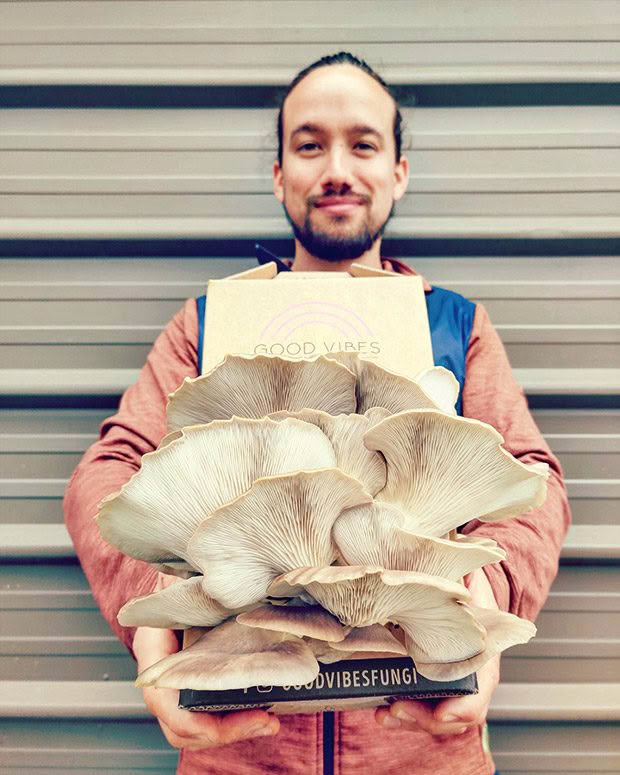
FLUSHING SUCCESS
The easiest boutique mushrooms, such as oysters, grow on wood and are ready to harvest within a few weeks. They’re also a bit more forgiving in terms of humidity and heat than other types such as shiitake, which take 12 weeks to grow.
Mushrooms start as cultures that you can buy in petri dishes. You use it to inoculate a substrate (the ‘soil’), usually a plastic bag of enriched sawdust. The mycelium (the ‘tree’) looks like fuzzy white threads and eventually fills the bag. It then produces mushrooms (the ‘fruit’).
In the US, they use hardwood sawdust, as that’s what most fungi prefer, but it’s almost impossible to get it in NZ. Kimi and Zane chose to use pine sawdust pellets, enriched with buckwheat hulls from an organic baker and organic rye grain. Pine is naturally high in fungicides and normally not recommended. But in NZ, you can buy bulk quantities of food-grade, organic pine pellets, and it’s the pelleting process that’s the key.
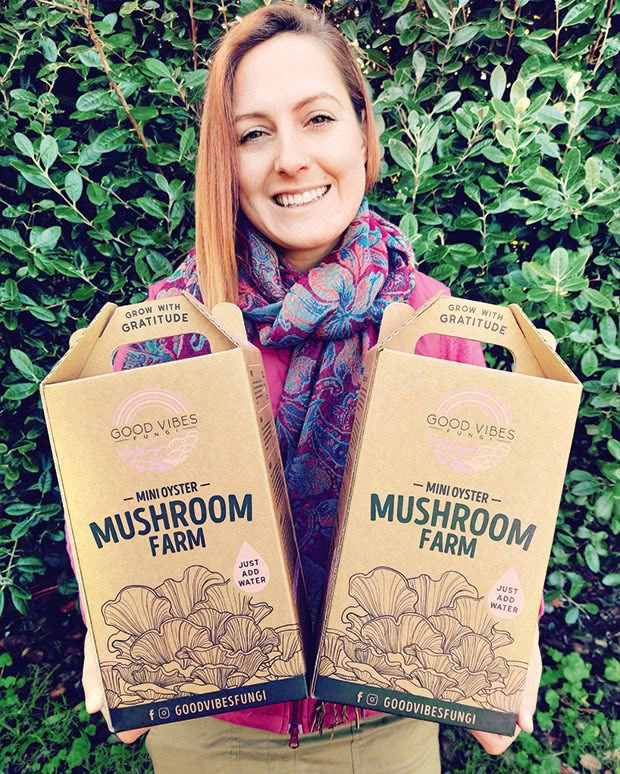
“When these pellets are made, they’re formed under immense heat and pressure which semi-sterilises them, and we add the buckwheat hulls to provide nutrients,” says Zane. “We’re essentially making a man-made log for the mushrooms to grow on.”
Using the leftover buckwheat from a local organic baker ticked a big sustainability box for the couple.
“Not a lot of people grow on buckwheat – we couldn’t find anyone local – so I reached out to some growers in Australia, and they said no, we’ve never had any luck. I don’t know if it was sheer luck or what, but we started growing these amazing mushrooms that were really large, so we’ve kept using it since then.”
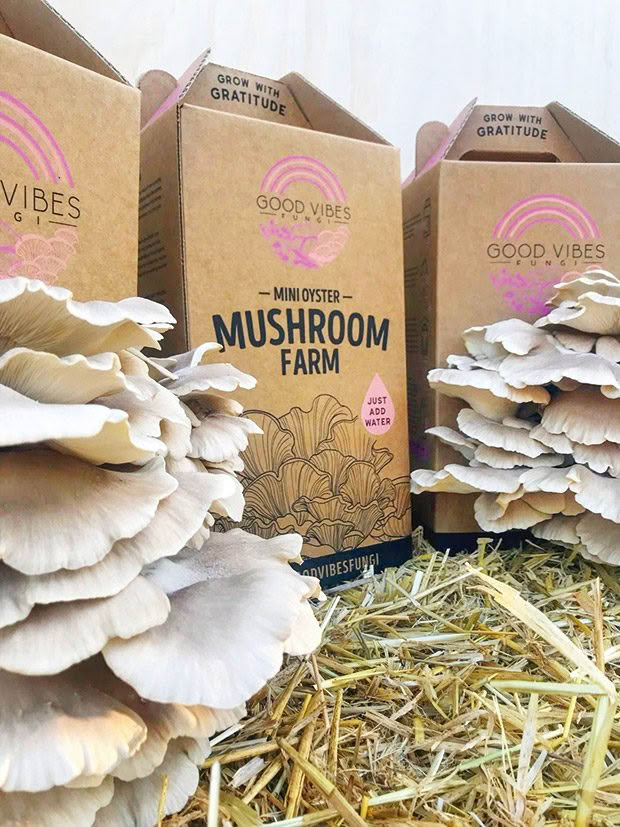
Kimi and Zane mix the substrate in what was a commercial kitchen in a shed on their block. Don turns the pellets, buckwheat, rye grain, and water into a nice fluffy texture. It should be just wet enough to form a ball if you squeeze it, says Zane, but not so wet that any water drips out, like a good compost.
The couple inoculates 10kg grow bags of substrate, then cut a series of holes in the sides. They’re hung in the incubation room for up to four weeks, depending on the variety. When they start ‘pinning’ – presenting baby mushrooms – they’re transferred into the climate-controlled grow room.
“The humidity, airflow, all of it, is gauged and controlled, so we have the perfect growing environment,” says Zane. “As soon as they go in there, they explode because there’s everything they need. I like to tell people when I open our grow room with the hanging bags that it’s like a vegan slaughterhouse when they’re fully mature.”
SHARING THE FUN-GI
Each week, the couple take their harvest to the local farmers’ market. “The feedback we get from the market and people is great,” says Kimi. “We have kids coming who never liked mushrooms and are now fascinated with them. We had a lady who was 72, and she told us she’s never liked mushrooms. So we said, go on, have a little try, and she left with a bag. Now she’s a mushroom lover.”
When they first started at the market, they took a grow bag to show people how the mushrooms develop. So many people wanted to do it themselves, Kimi and Zane decided they’d create a stylish growing kit to sell alongside their crops. They had a designer create a gorgeous box that holds a grow bag. They booked a spot at the GoGreen Expo in Auckland and spent long hours producing the spawn that was set to start fruiting in early April. Lockdown started on March 25. The expo was due to begin on March 28.

“We struggled,” says Zane. “In all honesty, it was a very terrible time. We didn’t have a website, so we frantically had to figure out an online sales method, find a logistical provider, and build a website. We had 1000 grow kits, and we sold maybe 600-700 at a heavily discounted rate. We came close to breaking even, but we still took a loss, and we had to compost a lot of bags. We killed many mushrooms – luckily, it’s nothing we can go to jail for.”
The plus was Zane learned a new building skill – “as a tradie, I’m pretty proud that I built that website!” – and the mini mushroom farms have become a large focus of their business. Before Covid, they had got their farm’s production to three-quarters capacity, producing 30kg a week, and selling it for around $60 per kilogram. They cut right back during lockdown as they couldn’t go to market under Level 4, and are still working to reach their pre-Covid levels.
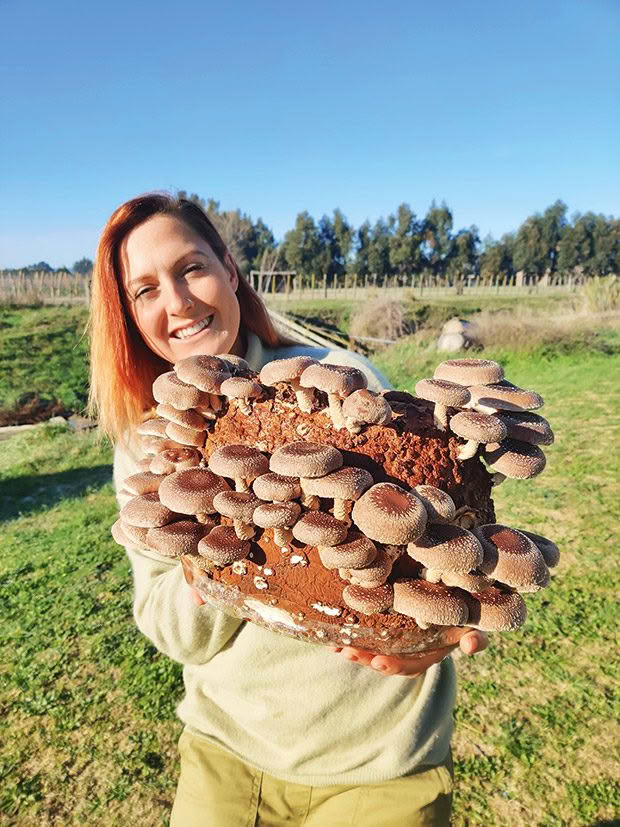
“Up until early September, we were both making a comfortable living, but we’ve just taken on our first full-time employee,” says Zane. “Harrison, he’s an amazing worker, and he’s freed up so much attention and energy for Kimi and I to focus on other things. We’ve sacrificed some of what we were earning for the growth of the business, and it has grown so well, despite the Covid speed bump. If we can get through that, I’m pretty sure our business is going to be around for a long time.”
The couple is keen to encourage others to get into gourmet mushroom growing. “We’ve just had our one-year anniversary,” says Kimi. “We’re finally feeling confident in what we’re doing.”
“I think the missing part in a lot of people’s dreams is taking action,” says Zane. “We went to the library and got a couple of books out; watched some YouTube videos and thought we’d give it a crack. “There’s been a lot of tears and laughter, but it has been a really challenging and rewarding experience.”
How much does it cost to set up a small-scale mushroom farm?
Christchurch’s Tom Brain is an enthusiastic boutique mushroom grower and Youtuber, encouraging others to get into fungi via his Oak & Spore Mushroom Farm channel. He produces 50-60kg a week from a set-up in his garage and sells it at the Lyttleton Market.
In one of his videos, he outlines the costs behind setting up a basic, DIY mushroom growing business producing 30-50kg of oyster mushrooms per week. He assumes you’ll do most of the work yourself as he did, but also gives (more expensive) options if you’re not DIY-inclined.
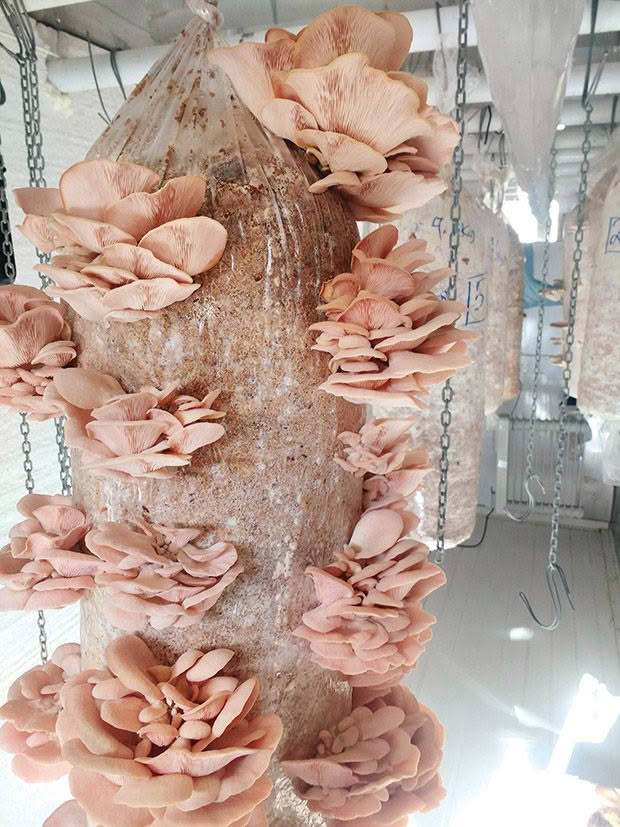
Mushroom lab
This is where you work with the fungi. You’ll need a room separate to your growing area and a laminar flow hood to blow filtered air across your workspace to prevent contamination. Tom made a hood (and you can watch him doing it on his YouTube channel), or you can buy them. You also need an autoclave (similar to a pressure cooker), a good quality impulse sealer (for sealing bags), a stainless-steel workbench, scalpels, and other equipment.
Minimum cost: $3000
Incubation room
This is where you keep bags of substrate while the mycelium grows. It’s cheapest to set it up in an existing room. It needs an air-conditioning unit, fan, a temperature control unit, and shelving for the grow bags.
Minimum cost: $1000
Fruiting chamber
When the mycelium is just about to start growing mushrooms, it’s moved into a fruiting chamber. Tom uses a 12m² indoor hydroponic grow tent erected in his garage, which holds 150 grow bags, and harvests 30kg of mushrooms per week. The chamber needs a humidifier, hydrofogger (to produce mist), lights, exhaust fan, and shelving.
Minimum cost: $2200+
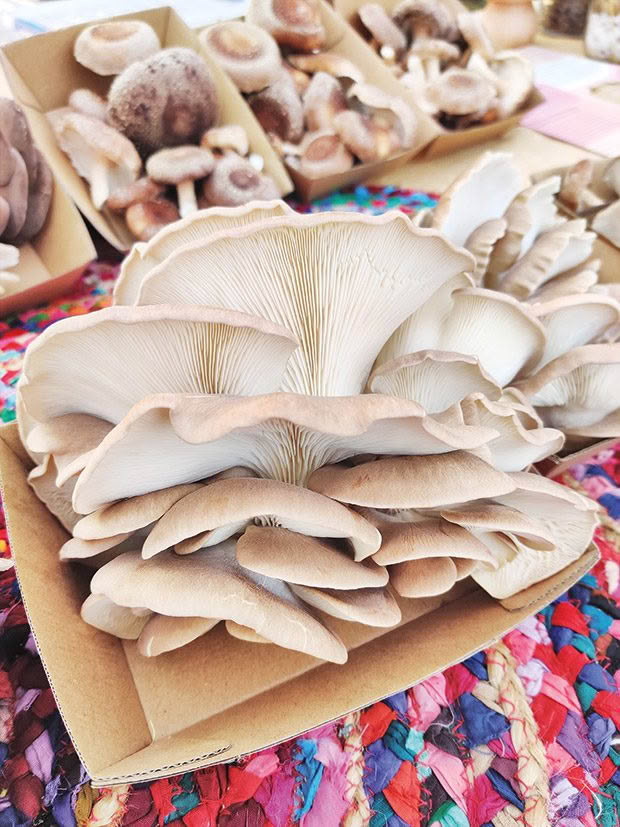
Pre and post-production equipment
Tom mixes and weighs his substrate by hand using industrial scales, but you can buy machines that do it for you. He also made a sterilising unit (he shows you how on YouTube), or you can buy one.
Minimum cost: $1000, up to $15,000 if you buy ready-made equipment.
Other costs
Tom recommends buying a good quality, two-sided commercial fridge. He stores the harvest on one side and spawn on the other.
Minimum cost: $3000
You’ll also need food-grade bins, extra stainless bench space, bags, substrate materials such as wood pellets, and supplements. Other costs may include an electrician, plumber, and builder.
Minimum cost: $800+
Minimum TOTAL cost: approximately $11,000
“After you’ve got all those costs added up, if you want to be conservative, double it,” says Tom.
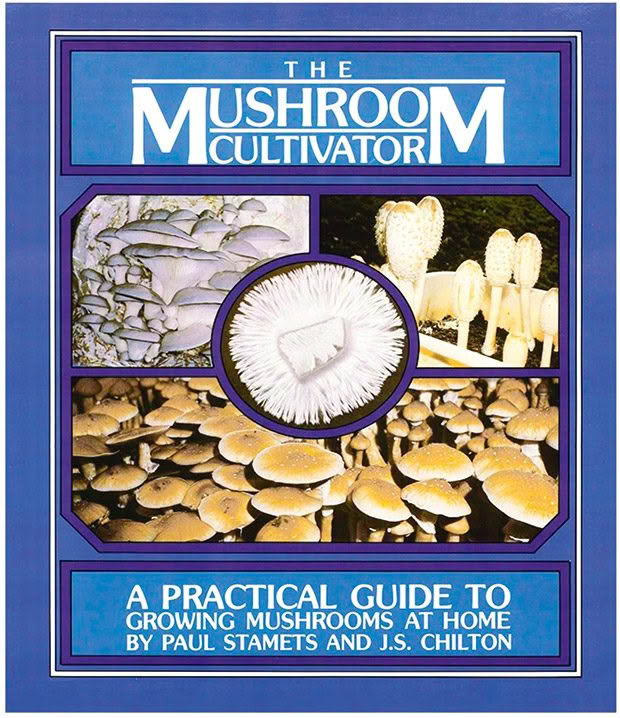
GET THE BIBLE
US mycologist Paul Stamets of fungi.com is an original hero of the small-scale mushroom farmer. He wrote the book considered a bible for anyone wanting to set up from scratch. It’s from 1983, so you’ll need to check your library, or you can buy a copy for an eye-watering price on Amazon (NZ$100+).
There’s also a lot of small-scale mushroom growers who have extensive videos of their set-ups on YouTube, including NZ grower Tom Brain of Oak & Spore.
7 REASONS WHY MUSHROOMS ARE MAGIC
1. Low-sodium, fat-free, cholesterol-free
2. Contain fibre, B-vitamins, vitamin C, vitamin D & potassium.
3. Rich in antioxidants. Research has shown different fungi can:
4. Detoxify cancer-triggering compounds in the body.
5. Play a vital role in liver enzyme function.
6. Prevent inflammation and reduce tumour growth in the body.
7. Reduce the risk of high blood pressure and cardiovascular disease.
Love this story? Subscribe now!
 This article first appeared in NZ Lifestyle Block Magazine.
This article first appeared in NZ Lifestyle Block Magazine.
